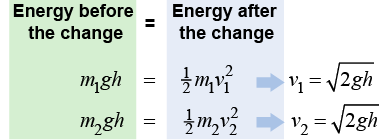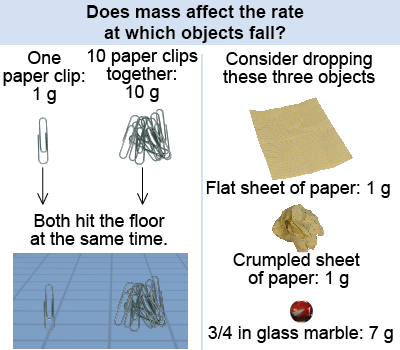|
 Conservation of energy is usually applied between two different states of a system before and after a change. In the context of physics a state is a particular configuration of all the elements in the system that has a certain energy. The change rearranges one or more elements in the system, usually transforming or transferring some energy. If the system is closed, the total energy before the change is the same as the total energy after the change. The distribution of energy in the system before and after the change determines what changes are possible.
Conservation of energy is usually applied between two different states of a system before and after a change. In the context of physics a state is a particular configuration of all the elements in the system that has a certain energy. The change rearranges one or more elements in the system, usually transforming or transferring some energy. If the system is closed, the total energy before the change is the same as the total energy after the change. The distribution of energy in the system before and after the change determines what changes are possible. 
|
Popular legend holds that Italian scientist Galileo Galilei dropped two balls, one ten times more massive than the other, from the top of the Leaning Tower of Pisa to demonstrate that, in the absence of air resistance, the acceleration of gravity is independent of the mass of the object. Historians dispute that Galileo actually performed this experiment, since only Galileo’s secretary claimed in writing that he had done so. Even if Galileo never did the experiment, we can use conservation of energy and a few paper clips to test Galileo’s hypothesis. 
| 
|
Which falls faster, 1 paper clip or a group of 10 paper clips together? 
|

|
 Before the change, neither mass is moving, so there is only potential energy. After the change, the height is zero, so there is only kinetic energy. For each system we set the energy before the change equal to the energy after the change and solve the resulting equations for the speed v. The result is the same for both! In the absence of friction, the speed depends only on the change in height h. Galileo was correct in his conclusion.
Before the change, neither mass is moving, so there is only potential energy. After the change, the height is zero, so there is only kinetic energy. For each system we set the energy before the change equal to the energy after the change and solve the resulting equations for the speed v. The result is the same for both! In the absence of friction, the speed depends only on the change in height h. Galileo was correct in his conclusion. 
 |
 The intuitive sense you have that lighter objects fall slower is not due to mass at all but comes from air resistance. Drop a marble and a sheet of paper and the lighter paper falls slower than the marble. Now crumple the paper into a ball, which changes its shape but not its mass. Repeat the experiment: The crumpled paper ball and the marble now hit the floor nearly at the same time, demonstrating that they fall at the same rate. Light objects with a large surface area fall slower in air because the effect of air resistance is large compared to their weight. A marble also experiences air resistance, but compared to its weight, the force of air resistance is much smaller.
The intuitive sense you have that lighter objects fall slower is not due to mass at all but comes from air resistance. Drop a marble and a sheet of paper and the lighter paper falls slower than the marble. Now crumple the paper into a ball, which changes its shape but not its mass. Repeat the experiment: The crumpled paper ball and the marble now hit the floor nearly at the same time, demonstrating that they fall at the same rate. Light objects with a large surface area fall slower in air because the effect of air resistance is large compared to their weight. A marble also experiences air resistance, but compared to its weight, the force of air resistance is much smaller.
For many centuries scientists thought that lighter objects fell more slowly, because they focused on high-friction examples such as a feather or flat sheet of paper. This confused the effect of air resistance with that of gravity. 
|
If you drop a bowling ball and a tennis ball from the same height, which one will hit the ground first?
 |
They will both hit the ground at the same time, traveling with the same velocity. 
|
| |
|

